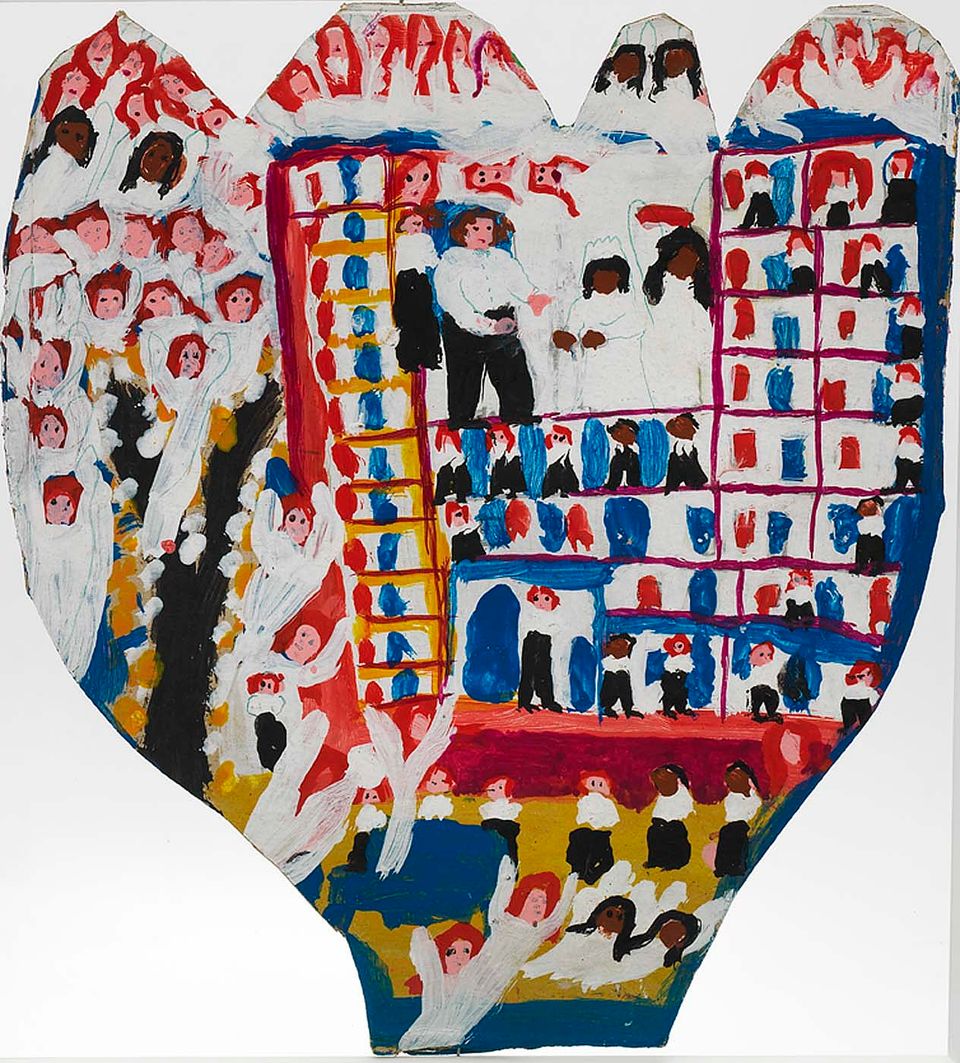Copied
Ulysses Davis, Untitled, 1942, carved and painted wood, inlaid with sand, 10 1⁄4 × 20 1⁄2 × 2 in. (26.0 × 52.1 × 5.1 cm), Smithsonian American Art Museum, The Margaret Z. Robson Collection, Gift of John E. and Douglas O. Robson, 2016.38.24
Copied
Artwork Details
- Title
- Untitled
- Artist
- Date
- 1942
- Location
- Not on view
- Dimensions
- 10 1⁄4 × 20 1⁄2 × 2 in. (26.0 × 52.1 × 5.1 cm)
- Credit Line
- The Margaret Z. Robson Collection, Gift of John E. and Douglas O. Robson
- Mediums Description
- carved and painted wood, inlaid with sand
- Subjects
- Architecture Exterior — domestic — house
- Landscape — road
- Landscape — tree
- Object Number
- 2016.38.24
Artwork Description
(We Are Made of Stories: Self-Taught Artists in the Robson Family Collection, 2022)
Exhibitions
July 1, 2022–March 26, 2023
We Are Made of Stories: Self-Taught Artists in the Robson Family Collection traces the rise of self-taught artists in the twentieth century and examines how, despite wide-ranging societal, racial, and gender-based obstacles, their creativity and














